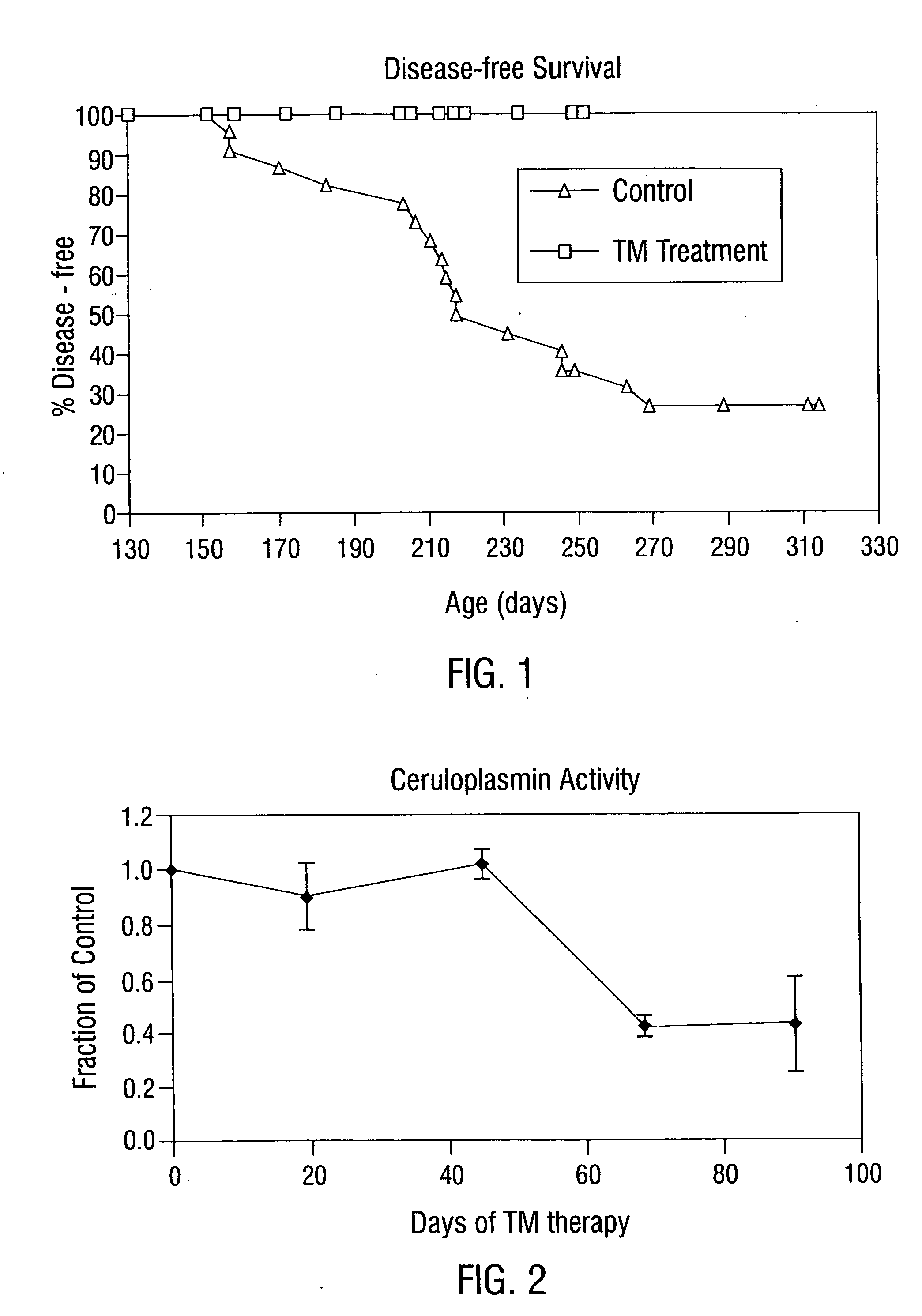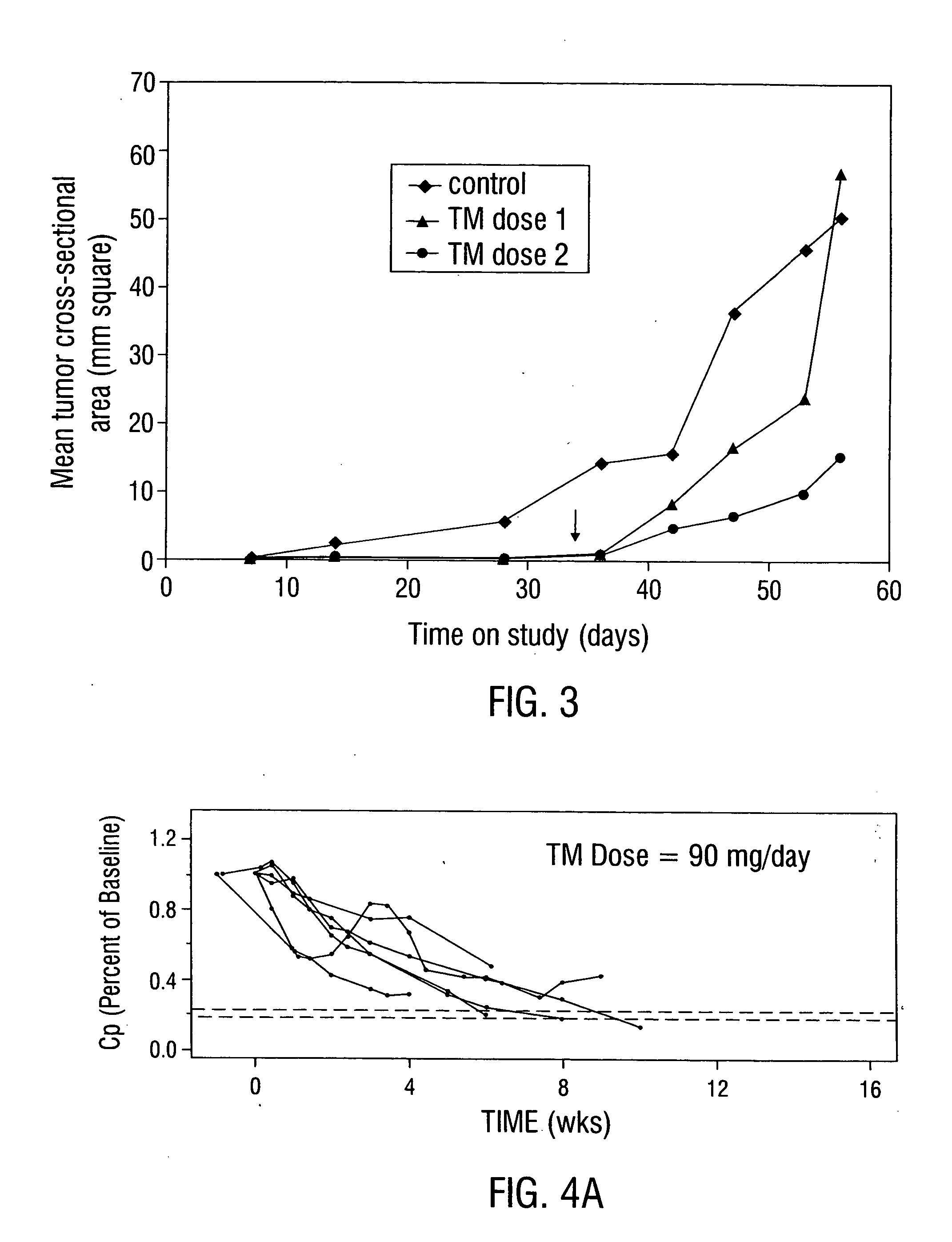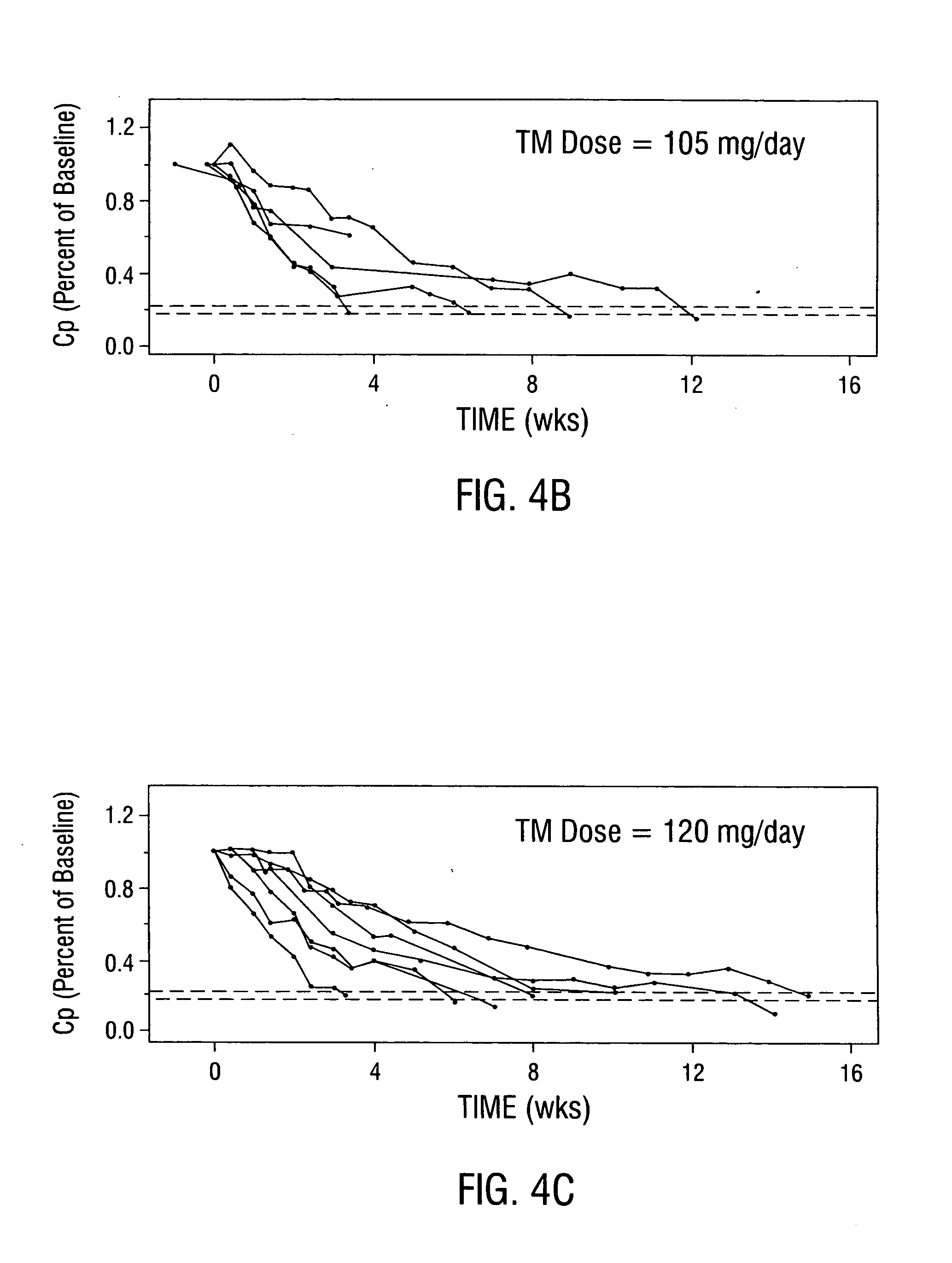Methods and compositions for the treatment of angiogenic diseases
a technology for angiogenic diseases and compositions, applied in the field of disease prophylaxis and therapy, can solve the problems of reduced tumor size, untreated control survival, and reduced tumor size, and achieve the effects of reducing or treating such diseases, reducing the level of copper, and slowing the onset or progression
- Summary
- Abstract
- Description
- Claims
- Application Information
AI Technical Summary
Benefits of technology
Problems solved by technology
Method used
Image
Examples
example 1
Effect of TM on Cellular Toxicity
Normal and neoplastic cells in culture derive their nutrients from transport and utilization of molecules from the media to the interior of the cell. This process is not dependent on blood vessel growth, and therefore TM should have no effect on cell growth rates and cell viability over a wide range of concentration, until a level of TM which is toxic to most cells is reached. One mechanism of toxicity is the depletion of free copper levels below those required for basic cell function. For concentrations of TM beyond this toxic level, both normal and neoplastic cells will be unable to survive, due to cellular toxicity of TM.
This was confirmed in a cytotoxicity assay of MML cells (prostate cancer) and breast cancer cells. After plating cells in equal numbers in media containing various concentrations of TM ranging from 0.001 μM to 1 mM, no toxicity was observed in the range of concentrations used in vivo. The fraction of viable cells decreased pre...
example 2
Use of TM in Murine Pre-Clinical Anti-Cancer Studies
The inventors reasoned that a greater degree of copper deficiency than previously achieved is necessary to significantly inhibit angiogenesis and arrest tumor growth. This means that, in addition to decreased tumor mass, prolonged survival or tumor regression would also be observed. The studies described below, which used anti-copper approaches for tumor growth inhibition in rodents, did not fully incorporate guidelines derived from human and animal trace element studies in general, and copper studies in particular (Dick and Bull, 1945; Miller and Engel, 1960; Macilese Ammerman et al., 1969; Mills et al., 1958; Cox et al., 1960; Dick et al., 1975; Mason, 1990; McQuaid and Mason, 1991; Mills et al., 1981a; Mills et al., 1981b; Bremner et al., 1982; Gooneratne et al., 1981a, b; Jacob et al., 1981).
In contrast, the present invention uses TM, the most potent anti-copper agent known. The inventors' extensive experience using zinc as...
example 3
Phase I / II Clinical Trial of TM as Anti-Cancer Therapy
A. Introduction
Patients with metastatic solid tumors often have very limited treatment options due to the cumulative toxicity of cytoreductive chemotherapy and drug resistance. Following the pre-clinical work detailed above, which showed efficacy for the anti-copper approach in mouse tumor models, a Phase I clinical trial was conducted in 18 patients with metastatic cancer who were enrolled at 3 dose levels of oral tetrathiomolybdate (TM; 90, 105, and 120 mg / day) administered in 6 divided doses with and in-between meals. Serum ceruloplasmin (Cp) was used as a surrogate marker for total-body copper. As anemia is the first clinical sign of copper deficiency, the goal of the study was to reduce Cp to 20% of baseline value, without reducing hematocrit by more than 80% of baseline. Cp is a reliable and sensitive measure of copper status, and TM was non-toxic when Cp was reduced to 15-20% of baseline. The level III dose of TM of 12...
PUM
 Login to View More
Login to View More Abstract
Description
Claims
Application Information
 Login to View More
Login to View More - R&D
- Intellectual Property
- Life Sciences
- Materials
- Tech Scout
- Unparalleled Data Quality
- Higher Quality Content
- 60% Fewer Hallucinations
Browse by: Latest US Patents, China's latest patents, Technical Efficacy Thesaurus, Application Domain, Technology Topic, Popular Technical Reports.
© 2025 PatSnap. All rights reserved.Legal|Privacy policy|Modern Slavery Act Transparency Statement|Sitemap|About US| Contact US: help@patsnap.com



